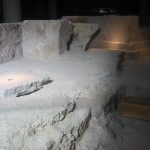“I am really happy. It has been an amazing experience.” With these two simple sentences does Brian Liao, the new best young baton in the world, summarize his time in the second edition of the International Conducting Competition “Llíria City of Music” 2023, of which he has been claimed winner. Now, the young man may be invited to conduct some of the best orchestras on the national and international scene. He is looking forward to it because “Spanish orchestras have a very high level,” he explained minutes after the grand finale celebrated on Saturday.

His triumph is a reflection of his refined technique as a conductor, his regularity in all rounds of the competition, his musicality, and also his charisma. He proved so in each of the rounds but, especially, in the final in which he faced the contemporary piece Monologue for chamber orchestra by Amparo Edo; Variations on a Rococo Theme for cello and orchestra by Tchaikovsky, with the soloist Mar Bonet; and Egmont (Overture), Op. 84 by Beethoven. “He is the best prepared to conduct any piece with solvency,” wielded several of the members of the jury during the deliberation.
He is not new to competitions, but it is his first triumph. He ended second in the Only Stage International Conducting Competition and third in the BMI International Bucharest Conducting Competition as well as in the International Conducting Competition for Chinese Music in Hong Kong.

He did not only win over the professional jury but also the musicians of the orchestra. With his technique, as well as with his sympathy and charisma. In each of the rehearsals, before the start, he would talk to them about “the siesta, the paella or Valencia;” always in Spanish, so the musicians connected with him from the very first moment. “It was clear to me that I had to learn some Spanish because speaking the language of the musicians is a sign of respect for them,” he explains.
He is from Taiwan but resides in Paris, where he has been assistant conductor for the Nationale Orchestre d’île-de-France during the 20/21 season. He has also worked with the South Denmark Philharmonic and the Festival Strings Lucerne. Moreover, he has collaborated with the National Taiwan Symphony Orchestra, Gran Canaria Philharmonic Orchestra, and George Enescu Philharmonic, among others.
He defines himself as a lover of Spanish culture: of its cities, of its gastronomy – he leaves having tasted paella, horchata, bravas, sangria and cazalla –, and of its language. He has lived through the experience to the maximum; in the musical sphere and also in the personal one. He reflected so through his eyes and his everlasting smile, a continuous sign of gratitude.
“The organization of the competition has been excellent,” he told everyone at the cocktail party after the final. “All the contestants have been very well looked after and perfectly cared for. The atmosphere has been very homely.”








